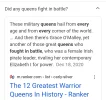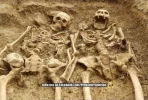DoughnutANZ
Ka whati te tai ka kai te tōreapango
- Time of past OR future Camino
- 2019, 2023, 2024, 2025, 2026, 2027 & 2028.
This article says that excavation of a site at La Almoloya in the southern Spanish region of Murcia suggests that the Bronze Age settlement that flourished here from 2200 BC to 1550 BC was more advanced than the rest of Western Europe at the time and may have had women among its rulers.
Article: https://www.theguardian.com/world/2...ite-in-spain-suggests-women-were-among-rulers
Spectacular site to visit.
Map links -
What3words: ///wickets.mister.marina
Google maps: XF3R+3M Pliego, Spain
Article: https://www.theguardian.com/world/2...ite-in-spain-suggests-women-were-among-rulers
Spectacular site to visit.
Map links -
What3words: ///wickets.mister.marina
Google maps: XF3R+3M Pliego, Spain






















